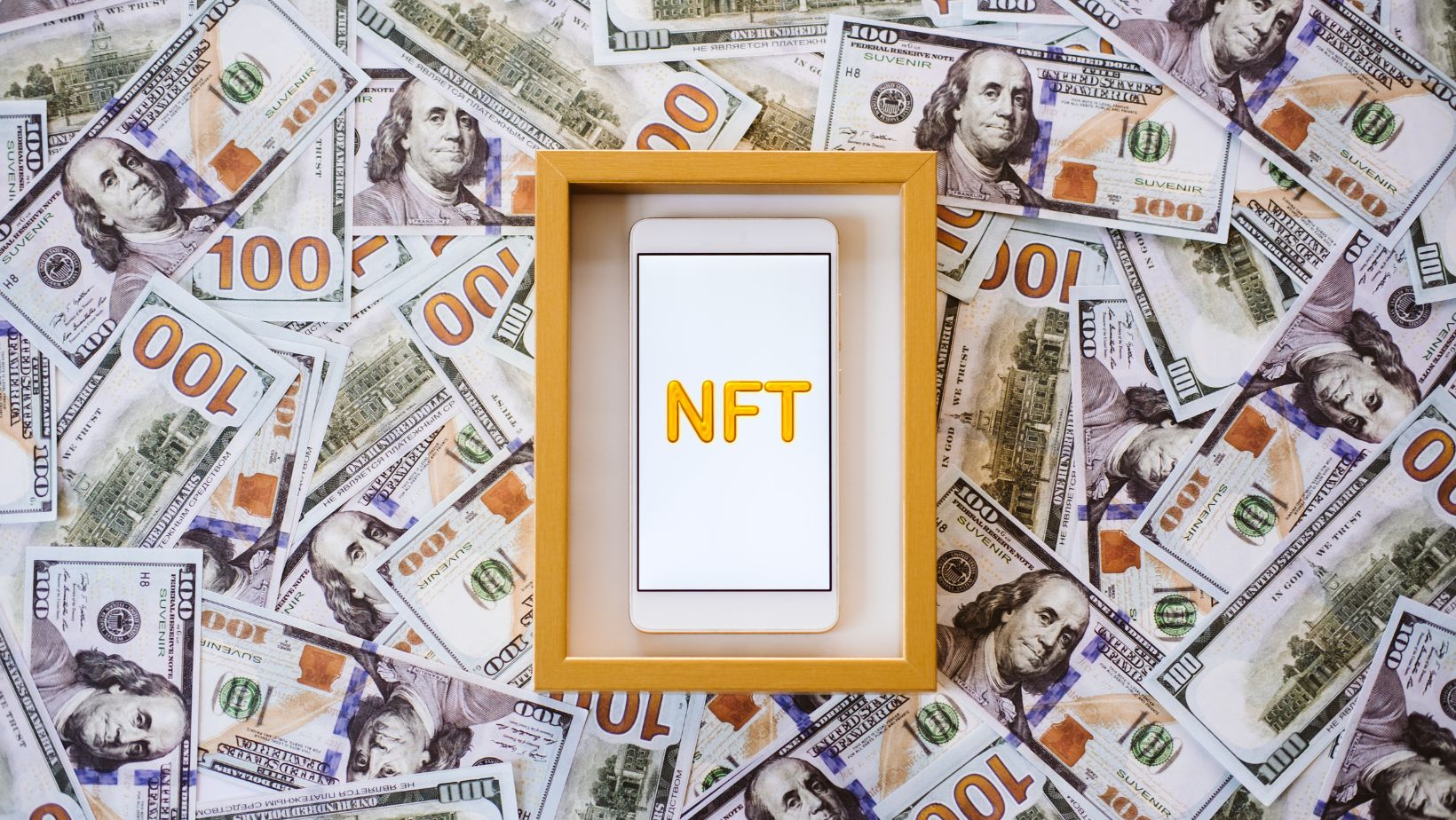In the traditional world of art collecting, the emergence of Non-Fungible Tokens (NFTs) has sparked a groundbreaking revolution that has spread across the globe. Although not immediately, the completely unique approach to ownership, authenticity, and value has ushered in a new era of art collection that transcends the limitations of tangible assets, offering a borderless realm of creativity and investment. However, this transformative shift doesn’t end here. The more technology evolves, the more new opportunities will arise to reshape how we perceive, acquire, and engage art.
This article delves into the existing NFT frontier to discover more about how these assets affect art collecting today, in what ways the technology may change the industry in the future, and whether there is something beyond NFTs. Enter the future of art and discover more about the space where innovation meets tradition and creativity knows no bounds.
How NFTs Reshape Art Collecting Today
In the digital pre-NFT era, galleries, and collectors had to contend with issues related not only to traditional art collecting but also those somewhat unique to the new digital landscape. Among the most relevant and tangible problems, art market participants tended to name the rise of plagiarism, the lack of means to protect or track their intellectual property, limited monetization options, and obscure transactions or restrictions. During that period, there were no practical ways to address these issues until NFT technology emerged.
Recorded on various blockchain systems, NFTs were introduced and subsequently promoted as a viable tool for creators and collectors to provide valid proof of authenticity and assert their rights over rightfully owned assets in the digital realm. Unlike already existing cryptocurrencies that also leveraged blockchain capabilities, each token was completely different from another, enabling owners to guarantee scarcity and present them as collectibles rather than just another alternative to fiat money.
From this point onwards, the presence of NFTs in the art world has been steadily rising, uncovering even more ways in which this technology affects the art market, such as:
- Art Market Democratization: NFTs make the art market more accessible to the general public by significantly reducing limitations based on one’s wealth, location, or status. With the introduction of NFTs, anyone can have a chance to own masterpieces like Salvator Mundi or The Night Watch. Moreover, this technology facilitates global collaboration between artists, collectors, and audiences from diverse cultural backgrounds and perspectives, enabling them to establish greater control over the art world’s future.
In order to restore the painting and its frame, Rijksmuseum organized the sale of The Night Watch NFT in 2022. Buyers were able not only to purchase an NFT but also to get access to another one depicting the restored work, become witnesses to the restoration, and directly fund the project.
- Increased Transparency: By leveraging blockchain capabilities, tokens enable any potential buyer to access transaction and ownership records to verify the authenticity of the assets. As a result, the industry can nurture business relationships based on trackable facts rather than mere words.
- Monetization of Digital Experiences: Compared to the pre-NFT era, artists will be able to leverage a diverse range of monetization options. Not limited to selling just images, they can capitalize on digital experiences such as virtual concerts, interactive games, and immersive stories integrated with play or engage-to-earn mechanics.
- Fractional Ownership: This form of digital ownership allows collectors to own just a fraction of an art NFT. While some may object to owning only a portion of the desired asset, others will be drawn to the sense of camaraderie and unity it can foster. Moreover, owning a part of an artwork doesn’t necessarily mean someone else will control how it is displayed, curated, or even modified; rather, these decisions are made collectively.
The Future of Art Collecting in the Age of NFTs
While NFTs offer many valuable features and opportunities to the art world, this technology still has its own limitations. However, combining them with other cutting-edge technologies of the post-NFT era enables creators to discover new distinctive forms of expression or engagement that can be traced to two interconnected categories.
New Art Forms
Dynamic Art: NFTs enable artists to create artworks that respond to user input or external data sources. Through smart contracts, artists are empowered to build programmable digital art assets that change over time, respond to user interactions, and incorporate real-time data. Artists can even create art projects where multiple contributors or collectors play a role in shaping the final artwork. Thus, NFTs contribute to expanding freedom of creative expression.

Generative Art: NFTs have given rise to generative art, where algorithms are used to create unique and evolving art pieces. These existing algorithms, combined with the rapid development of artificial intelligence, can produce artworks represented by a distinct NFT and formed in a machine’s mind rather than a human one. As a result, a new art movement driven to explore machine perspectives on our existence and the world may emerge in the industry.
Irrational Geometrics 2008 by Pascal Dombis is a great example of how generative art can become an exciting exploration of machine creativity.
Transitioning to Digital Reality
Virtual Reality (VR) and Augmented Reality (AR): Galleries can create immersive 3D exhibitions where users will be able to showcase their high-quality NFT assets to the public or their own communities. As the world becomes more digitized each year, this can be one of the ways to maintain a connection with the best features of traditional art ownership from the comfort of your home.
Decentralized Autonomous Organizations (DAOs): NFTs can be integrated into DAOs, which are community-led organizations governed by smart contracts. DAOs enable art communities consisting of galleries, collectors, and artists to collectively make decisions about art creation, curation, and distribution. Therefore, separate art institutions and the industry, in general, can nurture decentralized and community-driven art ecosystems.
Metaverses: Often associated with VR technologies, Metaverses are virtual ecosystems that have sparked the creation of new platforms for engaging art enthusiasts and novel business models, such as play-to-earn. In this model, players need to participate in events developed by creators to earn in-game currency, which they can then use to purchase assets that can be showcased, bought, or sold.
Musee Dezentral and other similar metaverses provide a unique digital experience through immersive virtual exhibitions, accessible to any user momentarily.
In essence, NFTs have expanded the boundaries of what art can be, allowing for experimentation and innovation that transcends the constraints of traditional physical media. As a result, artists have explored new forms of expression and established regulated ownership in the digital realm. However, is this the end?
Is There Space Beyond NFTs?
As it becomes evident, NFTs do more than just provide the market with unique and highly valuable features that address various issues in the daily digital life of art institutions, creators, and collectors. They serve as the foundation for other cutting-edge technologies to establish their presence in the digital realm and evolve into feasible platforms or tools that can be used as standalone products or in combination with NFTs. However, there is still one question that both supporters and opposers want to know: What will happen to the NFTs?
Truth be told, at this point, it’s hard to predict how technology will evolve in the near future. With the rapid development of AI technology and moderate interest in Metaverses among the industry giants, more in-depth research is required to make a feasible claim about any future changes. The only fact is that NFTs will stay in the industry for a long time. Why are we so sure? Despite forecasts of the fiercest critics, revenue in the NFT market is projected to reach $1.6mil in 2023 and is expected to grow to $3,1mil by 2027.
That’s why we highly encourage everyone interested in the development of the art industry and new technologies to participate in the NFT art industry firsthand. Alternatively, at the very least, invest some of your time in exploring the topic and finding out if there is something valuable specifically for you.

